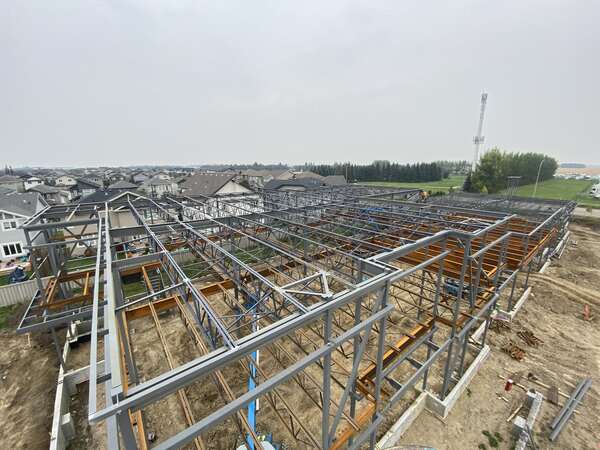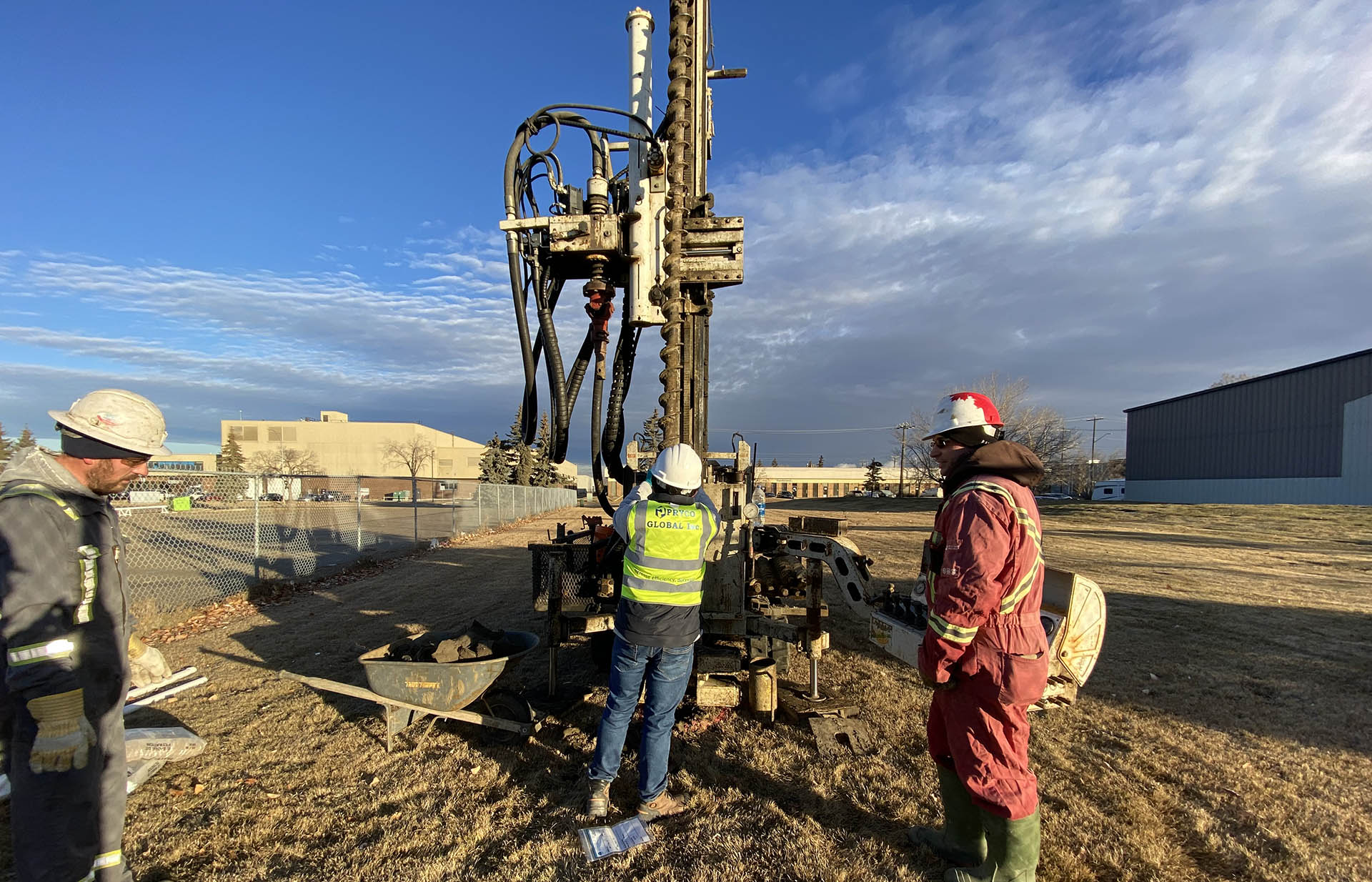Material Engineering Services – Edmonton, Calgary & Vancouver
PRYCO provides material engineering and testing of construction materials to help achieve the design life of various structural components. We also provide onsite testing and inspection services to ensure that the construction conforms to the design specifications.
Home » Our Services » Engineering »
What Is Materials Engineering?
Materials Engineering involves the properties of existing materials used in the construction industry. It involves materials testing onsite and in the laboratory to confirm that it meets the construction specification and standards. In the construction industry, major materials involved in the construction process are concrete, soil, asphalt, reinforcement steel, structural steel, metal and PVC piping and wood. Soil is very important in the design and construction of any structures. Soil engineering applies the principles of soil mechanics in the construction industry for earth materials. Every type of structure requires a certain type of materials to be used, and those materials should confirm the stated specifications. To achieve that, site testing and laboratory testing are conducted to ensure that the materials and construction meet the specified standards.



Material Engineering Services We Offer in Edmonton, Calgary & Vancouver
Materials Testing
This involves sampling and testing of materials that are used in the construction industry to confirm that it meets the stated specification and standards for the project.
Soil Testing
This involves sampling and testing of soils that are used in the construction industry to confirm that it meets the stated specification and standards for the project.
Soil Compaction
Soil is the most important material as all structures build transfers the load on the soil underneath. That is why soils that are used onsite or soil underneath the structure are tested in the laboratory to confirm that it meets the specified standard. During construction soils, compaction testing is done as per required compaction requirements to ensure that the construction meets the specified standard and to avoid any future settlement.
Standard Testing Method and Analysis
- Soil Testing: Various types of soil testing services are carried out based on the project’s needs. Common tests include grain size analysis, Proctor test, and Atterberg limits, among others.
- Soil Compaction Testing: Common Soil Compaction Testing on site is carried out through a nuclear densometer. The company has to have a licence to carry out this work. The other method of compaction testing is by sand replacement method, which is time-consuming.

Material Testing
Material testing involves testing commonly used materials such as soil, concrete, asphalt, reinforcement steel, structural steel, wood, PVC, HDPE, and metal pipe. In Edmonton, Calgary & Vancouver, all materials should be tested and confirmed to the standard specified in the specification for that particular project before use on the site.
Soil Testing
- Soil Testing: This involves soil testing services such as sampling and testing of soils used in the construction industry to confirm they meet the specified standards and project requirements.
- Soil Compaction: Soil is the most important material as all structures build transfers the load on the soil underneath. That is why soils that are used onsite or soil underneath the structure are tested in the laboratory to confirm that it meets the specified standard.

Concrete Testing
One of the key components in the construction industry is concrete. There are various grades of concrete that are used based on the requirement of the project. In order to ensure that the concrete used on site, there are various on-site and laboratory tests that are carried out to ensure that all concrete work carried out on site meets the standard. Concrete slump test. Concrete cubes are taken. Prior to the use of any materials, it is ensured through lab testing that the materials meet the specified standard. It is also important to ensure that the batching plant supplying the concrete has robust quality control and quality assurance practices in place.
Why Choose Pryco Global For Material Engineering?
We have a qualified team of professionals and an affiliated testing lab to ensure that all materials used in the construction process meet the required standards. To achieve this, field compaction testing, soil testing, and other material testing are carried out to verify that specified materials are used and on-site work meets the established criteria. Pryco Global Inc personnel also visit project sites across Edmonton, Calgary & Vancouver to ensure that all work is completed to the required standards.
Looking For A Professional Material Engineering Consultant?
Call UsFAQ
What is the biggest reason testing is done on construction materials?
Testing is done on construction materials to ensure that all materials used in the construction process meet the standard specified in the project specification. This is done by laboratory testing as well as field testing. Inferior material used in the construction can have a disastrous impact on the final product.
What are construction materials usually tested?
Commonly used construction materials that are tested are soil, concrete, and asphalt. In addition, reinforcement steel. Structural steel and wood are tested as per the requirement of the project.
What skills do material engineers need?
Material Engineers should be well-versed in all types of construction materials that are used in the construction industry. The testing method in the laboratory of all construction materials that are used as specified by various ASTM standards. In addition to that, he should be well-versed in field sampling and testing of soil, asphalt and concrete materials.
Why is a Soil test Valuable for me?
Soil is the most important of all materials. Any structures built on earth rest on the soil underneath. Soil testing provides information about the soil, such as the bearing capacity of the soil, density of soil, type of soil and if any organic matter or any other contaminant that is harmful to the environment is present or not.
